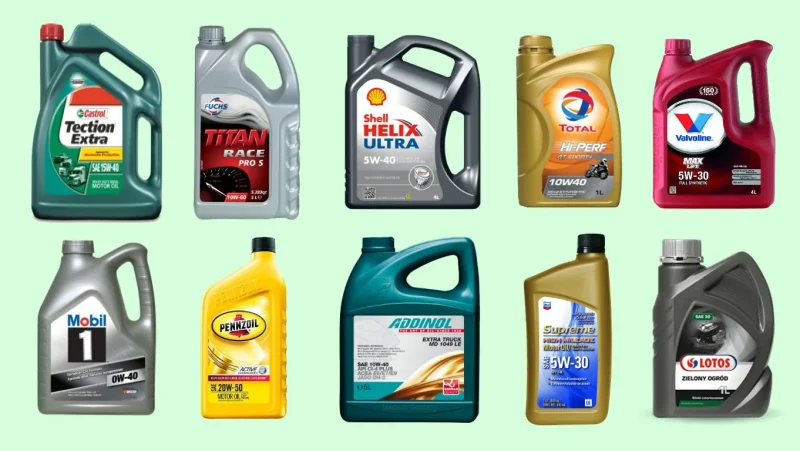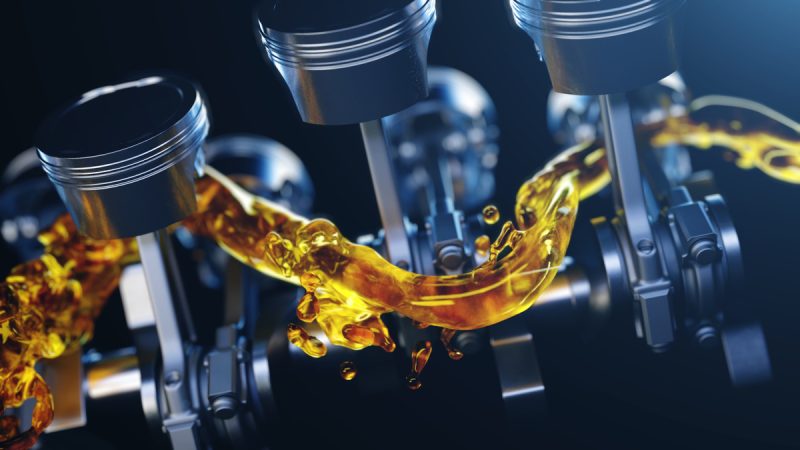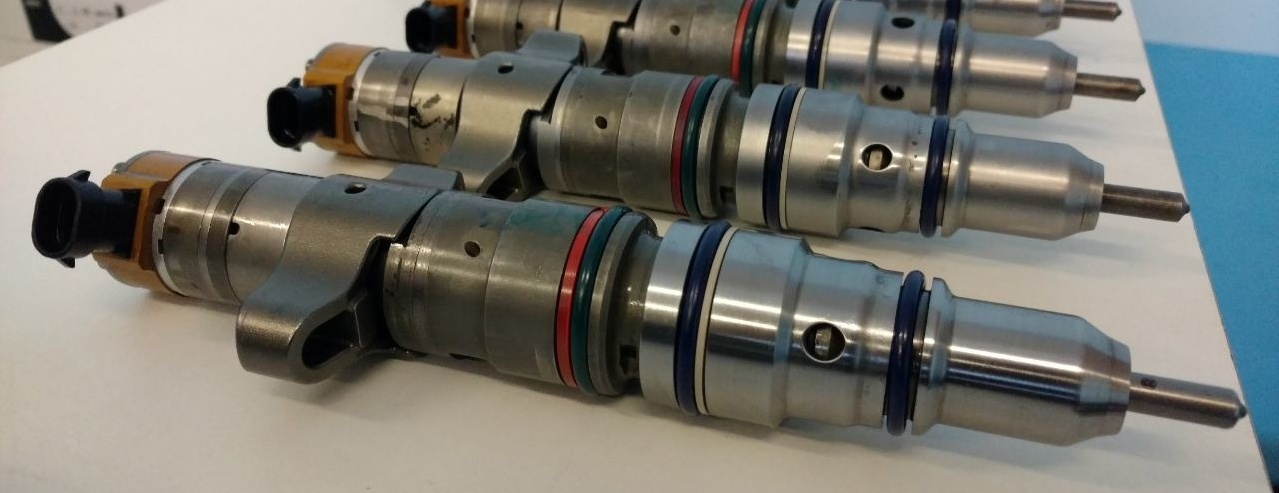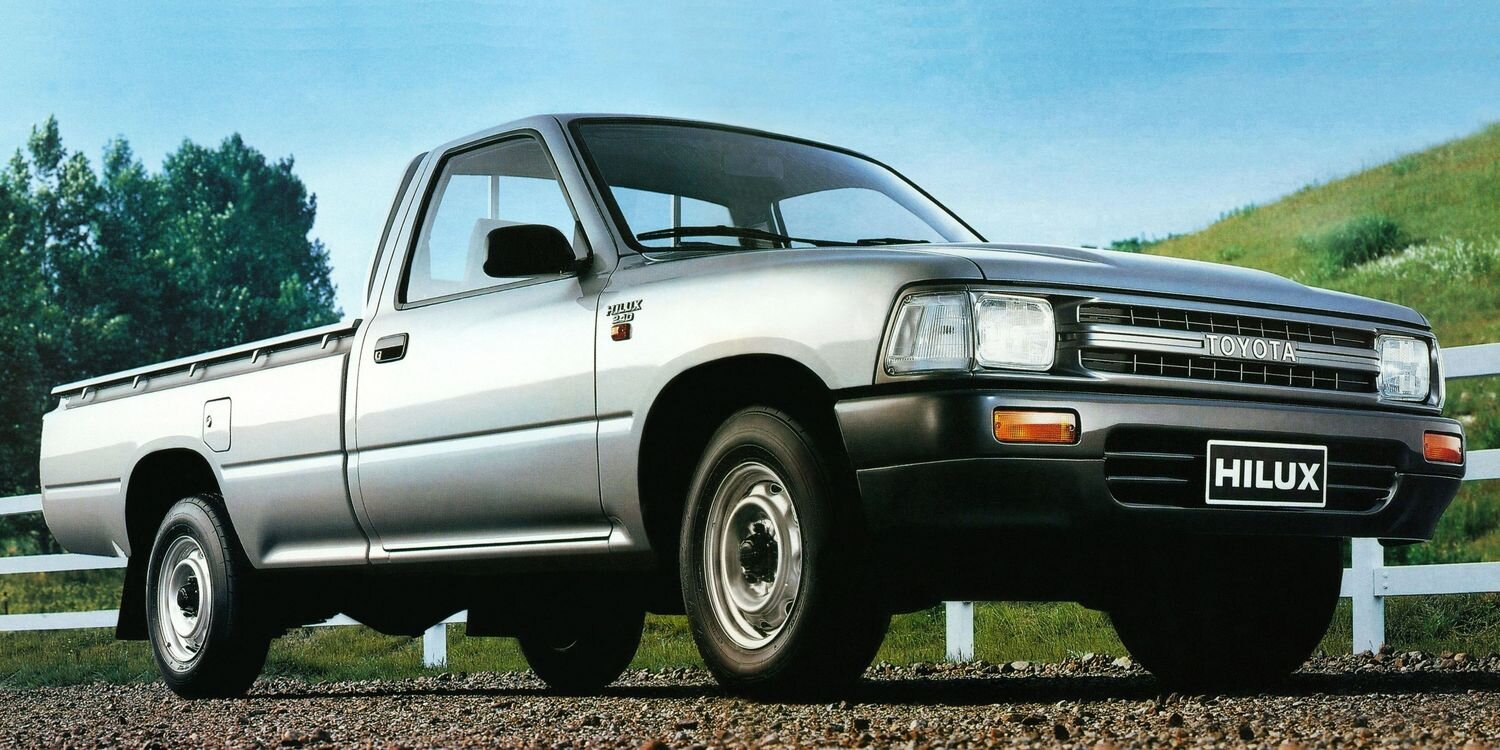The motor oil that is guaranteed to suit your engine is the original one or the one specified in the recommendations for the car. But the original is expensive, and all recommendations, as a rule, promote only brand partners. And it is not always the best choice: we wrote about such cases in a separate article.
If you want to try products from other manufacturers – no problem: the labeling of oils will allow you to accurately determine whether such an alternative is suitable. Here we will look at what the numbers and letter indices on the engine oil mean.
How the base of the motor oil is labeled
In sorting out what the motor oil labeling means, let’s literally start with the basics. Each label usually contains information about the base – the basic component of the oil on which it is made. It comes in three types.
- Mineral (Mineral) is the simplest and cheapest, made by distilling petroleum products. It is used only in old, inexpensive or specific (for example, for a rotary engine) motor oils.
- Synthetic (Synthetic) – a base created by synthesizing chemical elements rather than directly from petroleum. Synthetic oils are ahead of mineral oils in almost everything: they better protect against wear, clean from soot, and they also have a more stable viscosity, which makes it easier to start the engine at low temperatures.
- Semi-Synthetic (Semi-Synthetic) – a compromise option for those to whom synthetics is expensive. As a rule, it is made on a mineral basis, but with the use of a large number of useful additives.
In the designation of the oil can be nuances with the basis. For example, semi-synthetic oil may be labeled Synthetic Technology, but it does not become a synthetic oil. And oils based on polyalphaolefins (PAO) are often called Fully Synthetic, which emphasizes only the most advanced technology of oil production and, accordingly, its “fully synthetic” basis.
Classification of oils by API
The API classification of oils is a system that is considered basic and is used all over the world. All oils in it are divided into categories according to the type of engine and the degree of load on it.
API (American Petroleum Institute) – American Petroleum Institute, engaged in research and regulation in the field of oil and gas industry. In the middle of the last century, it created a classification system for motor oils, according to which they were categorized by quality and engine type.
Oils corresponding to the API classification are labeled with these marks:
If we do not go deep into the chemical component, we can say that API classes characterize the adaptability of the oil to new operating conditions, designs and environmental requirements. For example, the SN class (we’ll talk about what they are below) takes into account the possibility of working on biofuels and is focused on energy-saving technologies. Earlier grades had different emphases.
What does the API coding of motor oils look like? It is usually two Latin letters, less often with numbers or additional symbols. The first letter C or F means that the oil is designed for diesel engines, if S – for gasoline engines. The second letter characterizes the oil class.
The most modern standard for gasoline engines today is SP. It has been in effect since May 1, 2020 and takes into account the mass transition to turbocharged and direct injection engines (a trend driven by increasingly stringent environmental requirements), the combination of which affects the combustion process in the cylinders and requires specific lubricant properties. In the previous SN class (from 2011, later SN+), phosphorus content was limited in order to increase the service life of exhaust gas neutralizers.
For diesel engines, the latest standards FA-4 and CK-4 have been in force since 2016. Prior to them, CJ-4 was considered relevant for over 10 years. Therefore, if you have a motor oil label in front of you, the decoding will show how modern it is.
API oil specifications for gasoline engines (S)
| Index | Effectiveness Period | Description |
|---|---|---|
| API SA | Older Class | Oils without additives |
| API SB | 1930s | Older class |
| API SC | 1964-1967 | Older Class |
| API SD | 1968-1971 | Older Class |
| API SE | 1972-1980 | Older Class |
| API SF | 1981-1989 | Older Class |
| API SG | 1988-1995 | Older Class |
| API SH | Since 1993 | Oils with improved performance, replacing previous classes |
| API SJ | Since 1995 | Enhanced protection against corrosion, oxidation, wear |
| API SL | Since 2000 | Improved properties, increased economy |
| API SM | Since 2004 | Energy saving requirements, improved low temperature properties |
| API SN | From 2010 | Reduced phosphorus content, improved fuel economy |
| API SN+ | From 2018 | Additional protection against detonation at low speeds |
| API SP | From 2020 | Resource-saving oils, increased turbocharger protection, low-speed detonation protection |
API Oil Specifications for Diesel Engines (C)

| Index | Effectiveness Period | Description |
|---|---|---|
| API CA | Before 1949 | Older class |
| API CB | 1949-1961 | Older Class |
| API CC | 1961-1975 | Older Class |
| API CD | 1975-1983 | Older Class |
| API CE | 1983-1990 | Older Class |
| API CF-4 | From 1990 | For 4-stroke diesel engines, reduces fuel consumption and fouling |
| API CG-4 | From 1995 | For fuels with sulfur content < 0.5%, improved CF-4 characteristics |
| API CH-4 | From 1998 | For Euro-4 engines and below, compatible with EGR systems |
| API CI-4 | From 2002 | For engines Euro-5 and below, compatible with EGR and SCR systems, without DPF |
| API CI-4+ | From 2004 | Stricter requirements for soot, deposits and viscosity performance |
| API CJ-4 | From 2006 | For Euro-5 and Euro-6 engines with diesel particulate filters (DPF) |
| API CK-4 | From 2016 | For high-speed diesel engines and engines with DPF, compatible with fuels with sulfur content of 0.0015-0.05% |
| API FA-4 | From 2016 | For modern diesel models running on low-viscosity oils and fuels with sulfur content < 0.0015%, not compatible with previous tolerances |
AE Oil Classification
We have sorted out the classes, but what do the numbers on the engine oil mean? Perhaps the main characteristic in the designation of engine oil is its viscosity. It is classified according to the standards of SAE (Society of Automotive Engineers) – an organization that dates back to 1905. This is the same set of Latin letters and numbers that are always on the label: for example, 10W-30.
There is a clear deciphering of engine oil marking by SAE:
- The first digit/number stands for viscosity at low temperatures. The larger the number, the higher the viscosity.
- The letter W (and there can be no others) confirms the possibility of use in winter conditions (Winter).
- The second digit/number characterizes the viscosity at high temperatures. This means, of course, not the engine temperature, but the ambient temperature.
According to the current standard SAE J300 from 2024, oils are divided into 14 categories: 8 summer and 6 winter. Summer oils have indices 8, 12, 16, 20, 30, 40, 50, 60. Winter oils have indexes with the letter W: 0W, 5W, 10W, 15W, 20W, 25W, where 0W means safe starting at -35°C and 25W – at -10°C. The double index with a hyphen indicates that the oil is all-season.
Within the framework of the SAE standard for summer oils, the limit values of kinematic viscosity at a conditional operating temperature of 100°C and dynamic viscosity at 150°C are set. For winter oils, the standard defines the limit values of viscosity at negative temperature, when simulated cold cranking of the starter and check the pumpability of the oil, and kinematic viscosity – when warmed up to 100 ° C. For multigrade oils both groups of tests are carried out.
Viscosity classes of winter motor oils SAE J300
| SAE viscosity class | CCS, MPa-s (Max), at temp., °C | MRV, MPa-s (Max), at temp., °C | Kinematic viscosity, mm²/s, at 100°C |
|---|---|---|---|
| 0W | 3250 at -30 | 30000 at -35 | 3,8 |
| 5W | 3500 at -25 | 30000 at -30 | 3,8 |
| 10W | 3500 at -20 | 30000 at -25 | 4,1 |
| 15W | 3500 at -15 | 30000 at -20 | 5,6 |
| 20W | 4500 at -10 | 30000 at -15 | 5,6 |
| 25W | 6000 at -5 | 30000 at -10 | 9.3 |
Viscosity classes of SAE J300 summer motor oils
| SAE viscosity class | Kinematic viscosity, mm²/s, at 100 °C (Min) | Kinematic viscosity, mm²/s, at 100 °C (Max) | HTHS, MPa-s (Min), at 150 °C and shear rate 10⁶ s-¹ |
|---|---|---|---|
| 8 | 4.0 | 6.1 | 1,7 |
| 12 | 5.0 | 7.1 | 2.0 |
| 16 | 6,1 | 8.2 | 2,3 |
| 20 | 6.9 | 9.3 | 2.6 |
| 30 | 9.3 | 12.5 | 2.9 |
| 40* | 12.5 | 16.3 | 2.9 |
| 40 | 12.5 | 16.3 | 3.7 |
| 50 | 16.3 | 21.9 | 3.7 |
| 60 | 21.9 | 26.1 | 3.7 |
*Class 40 with HTHS 2.9 refers to viscosity classes 10W40, 5W40, 10W40.
*Class 40 with HTHS 3.7 corresponds to viscosity classes 15W40, 20W40, 25W40, 40.
The majority of modern motor oils are multigrade, so their marking is exactly the same. But there are some exceptions. For example, if it is a special winter motor oil, the marking can have only the first digits and numbers, as well as the letter W (for example, 5W). If it is created only for summer operation, the package will have only the last numbers (like SAE 40). But such cases for automotive equipment are rare.
To understand, with what index SAE oil you need, you can only from the recommendations of the car manufacturer (or engine). For older motors, the difference was not so fundamental, but for modern high-tech units, too viscous or very liquid oil can be disastrous. So now you know how to determine viscosity from the labeling.
Recommended temperature ranges for motor oils of different SAE viscosity grades
ILSAC oil classification

A classification system created by the Japan Automobile Manufacturers Association (JAMA) and the American Association of Manufacturers (AAMA), ILSAC imposes more stringent requirements on gasoline engine oils than other standards.
International Lubricant Standardization and Approval Committee (ILSAC) – The International Lubricant Standardization and Approval Committee for motor oils.
ILSAC standardized oils must meet the following requirements:
- reduced viscosity;
- reduced tendency to foam;
- reduced phosphorus content (to extend catalytic converter life);
- improved filterability at low temperatures;
- preservation of properties (ability to penetrate small gaps between moving elements) at increased pressure;
- fuel economy;
- low volatility.
ILSAC oil specification
| Index | Effectiveness Period | Description |
|---|---|---|
| ILSAC GF-1 | Olderly. Introduced in 1994 | Compliant with API SH standard |
| ILSAC GF-2 | Older. Introduced in 1997 | Compliant with API SJ standard |
| ILSAC GF-3 | Established in 2001 | Complies with API SL standard. Additionally includes the following requirements: |
| – environmental friendliness of the exhaust; | ||
| -fuel economy; | ||
| – prolongation of engine life. | ||
| ILSAC GF-4 | Introduced in 2004 | Complies with API SM standard. Provides improved: |
| – detergent properties; | ||
| -fuel economy; | ||
| – reduced phosphorus content (up to 0.08%); | ||
| – prolongation of engine life. | ||
| ILSAC GF-5 | Introduced in 2010 | Complies with API SN standard. Includes requirements: |
| – protection against high-temperature deposits; | ||
| – reduction of sludge formation; | ||
| – compatibility with biofuels; | ||
| – environmentally friendly exhaust; | ||
| -increased oil change interval. | ||
| ILSAC GF-6 | Introduced in 2020 | Compliant with API SP standard. Tightened requirements: |
| – reduction of phosphorus content to 0.08%; | ||
| -fuel saving; | ||
| – LSPI low-speed pre-ignition protection; | ||
| – engine life extension. | ||
| ILSAC GF-6A | Subcategory of ILSAC GF-6 standard. Conforms to API SP. | For multigrade oils of viscosity classes: 0W-20, 0W-30, 5W-20, 5W-30, 10W-30. |
| ILSAC GF-6B | A subcategory of the ILSAC GF-6 standard. Introduced in 2020. | Applies only to engine oils of viscosity class SAE 0W-16. |
Classification of oils by ACEA
ACEA standard appeared in 1991. Its requirements differ from the API standard.
Association des Constructeurs Européens d’Automobiles (ACEA) is a European association of automakers, which unites 15 major European, Japanese and Korean manufacturers of cars, trucks, vans and buses.
Similar to API, the ACEA standard categorizes motor oils by engine type and engine load:
- A – oils for gasoline engines;
- B – oils for diesel engines up to 2.5 liters;
- C – oils for gasoline and diesel engines with catalytic converters;
- E – oils for diesel engines over 2.5 liters, operating under severe conditions.
Additionally, each category has subcategories:
- 1 – energy-saving oils;
- 2 – oils of wide consumption;
- 3 – high quality oils with extended drain time;
- 4 – direct injection engine oils;
- 5-9 – oils with the highest performance properties.
ACEA oil specifications for gasoline and diesel engines of passenger cars, vans, minibuses

| Index | Period of validity | Description |
|---|---|---|
| A1/B1 | Not used since 2016 | Low-viscosity oils for extended drain intervals. For light to medium operating conditions in gasoline and diesel engines in passenger cars and light trucks. |
| A3/B3 | Active | Oils for standard replacement intervals. Designed for heavy duty conditions in gasoline and diesel engines of passenger cars and light trucks. |
| A3/B4 | Active | High performance oils for gasoline engines and diesel engines with direct injection. Suitable as a replacement for A3/B3 oils. |
| A5/B5 | Active | Low-friction oils with low coefficient of friction. Used for extended drain intervals in high-force gasoline and diesel engines. |
ACEA oil specifications for engines with exhaust gas cleaning systems
| Index | Effectiveness Period | Description |
|---|---|---|
| C1 | Active | Low-viscosity energy-saving oils. For engines with diesel particulate filters (DPF) and three-component catalytic converters (TWC). |
| C2 | Active | Low-friction, low-viscosity oils. For engines with DPF and TWC. |
| C3 | Active | Oils for high-force gasoline and diesel engines with direct injection. Suitable for heavy-duty diesel engines. |
ACEA specifications for heavy-duty diesel engines
| Index | Effectiveness Period | Description |
|---|---|---|
| E2 | Actual | Oils for medium drain intervals. For atmospheric and turbocharged engines operating under medium and heavy conditions. |
| E4 | Active | Oils for significantly extended drain intervals. For engines operating under very severe conditions. |
| E6 | Active | Oils for extended drain intervals. For turbocharged engines with particulate filters running on low sulfur fuel. |
| E7 | Active | Oils for extended drain intervals. For high-speed engines without particulate filters but equipped with exhaust gas recirculation (EGR) systems. |
| E9 | Actual | Oils for engines running on fuel with reduced sulfur content. Compatible with EGR and SCR systems. |
What are the tolerances of the automobile manufacturer
What other parameters allows you to know the marking of the engine oil? Decoding, in addition to the main characteristics, may also contain the tolerances of the automobile manufacturer. These are additional designations made of Latin letters and numbers – for example, VW 502 00. The presence of the manufacturer’s tolerance means that the oil has passed the necessary test cycle and is recommended by the car manufacturer (in this case – Volkswagen) for use in certain engines of its models.
If there is no clearance on the oil canister, it does not mean that it is bad and you should not buy it. Perhaps, the brand simply did not spend time on testing according to factory programs and did not receive the appropriate designation. This is what the Korean brands Kia/Hyundai do, for example.
The same oil, as a rule, has the approval of several automakers at once. In this case, these are Fiat, Renault, Ford, Mercedes-Benz (MB) and VAG. The tolerances through the “/” indicate that the oil is suitable for both gasoline engines (502) and diesels (505).
Note that the principle of “more modern is better” does not work with tolerances. For example, the specification VW 503.00 have the so-called Longlife oils, designed for long service intervals. They are recommended for many models of VAG concern produced since 2000 and further. But it is undesirable to use them for older cars. The reason is the low “winter” viscosity of such oils (usually 0W-30 and 5W-30), which can cause rapid wear of motors of the last century.



0 Comments